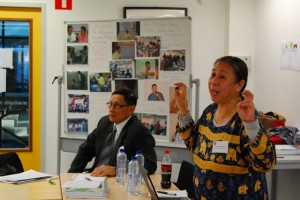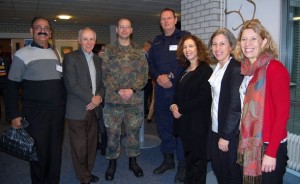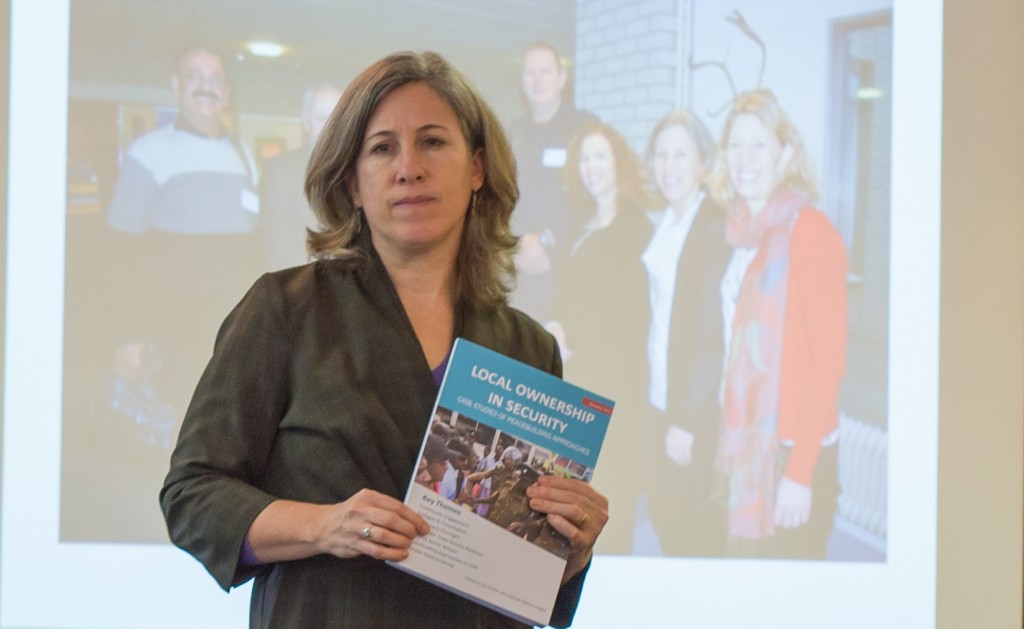The keynote speech at a conference last December in the The Hague, the Netherlands, came from an unlikely pair of peacebuilders from the Phillipines. Deng Giguiento, a longtime peace trainer in the NGO sector and Gen. Raymundo Ferrer described how they’d slowly built trust across the ideological gulf that usually separates peace workers and soldiers, and then went on to collaborate on various projects that have improved security in a troubled region of their country.

“It’s a really, really beautiful story,” said Lisa Schirch, a research professor at EMU’s Center for Justice and Peacebuilding (CJP), who was in the audience. “Today the Philippines is really the ideal case study where civil society, the military and the police are working together the most.”
For years, Schirch has spent an enormous amount of time thinking about the essential role such collaboration between civil society and the security sector plays in peacebuilding. At the conference in The Hague, attended by dozens of military, police and civil society leaders from around the world, she released her new 300-page training manual on the topic, Handbook on Human Security: A Civil-Military-Police Curriculum.
The handbook, accompanied by a separate collection of 40 case studies of civil society work with the military and police, a policy brief and two videos – all available online – is the culmination of three years of work. With support from the Rockefeller Brothers Fund, Schirch worked with partners from more than 100 peacebuilding organizations around the world to develop the first-of-its-kind curriculum, designed to improve human security by facilitating cooperation between civil society, police and the military.
Cooperation necessary and important
Although the just-published manual was three years in the making, Schirch traces the true beginnings of the project to the morning of the September 11 attacks, when she and her colleague Jayne Docherty – now the program director of CJP – began writing a document envisioning a “A Long Term Strategy for American Security.”
Schirch said the curriculum is already being used in the Philippines and Tajikistan, and that she hopes for a wider audience.

“We tried to make it relevant to very different security challenges, from drug trafficking to insurgent groups to a repressive government and civil society response,” she said.
Whatever the context, the fundamental idea behind the handbook is, as Schirch wrote in the introduction: “Human security depends on fruitful civil-military-police understanding and coordination.”
“New generations of security sector leaders recognize that civil society is an important stakeholder for sustainable security,” she continued. “At the same time, many in civil society recognize the need to engage with the security sector as key stakeholders necessary for sustainable peace.”
After the conference in The Hague, Schirch made a few final edits to the curriculum and has been preparing for a final visit to the U.S. Army War College, where she has worked with military officers for 10 years to learn about their perspectives on security and advance their understanding of civil society peacebuilding.
For Schirch, the publication of the curriculum also marked – temporarily, at least – an end to a hectic schedule of regular commuting to Washington D.C. and frequent international travel as she taught and studied civil-security sector relations.
New projects related to religion, violent extremism
In early 2016, she will begin co-chairing a new task force convened by the U.S. State Department Office on Religion and Global Affairs. The group has been asked to write a handbook for training Foreign Service officers on engagement with religious actors.
Schirch will also work part-time for the Japan-based Toda Institute for Global Peace and Policy Research. Among her responsibilities there will be helping plan a seminar on peacebuilding response to violent extremism that the organization will host next fall at EMU. Schirch will also teach one course each year at the Summer Peacebuilding Institute.
Schirch also shared that she plans to spend time with her family and in her garden, as well as on an art project using traditional Mennonite art forms like fraktur and etchings from the Martyrs Mirror to explore the positive and negative implications of Mennonite peace theology.
On a related note, she is also writing a book, A Tribe Called Mennonite, about her own career and the philosophy and psychology of Mennonite peacebuilding. She’ll speak about this work in a keynote address at a conference in June 2016 at Conrad Grebel University College in Waterloo, Ontario.

Amazing what you have and are doing! Howard Zehr will be proud of you! blessings.
I thank God for your work spreading throughout the world. Happy too for time you have to spend in the garden. I will watch for the completion of “A Tribe Called Mennonite” Keep up the good work.